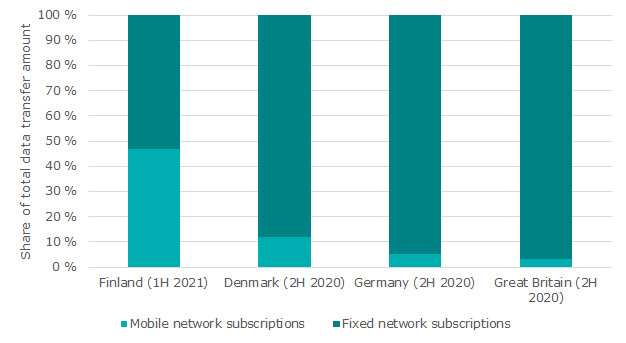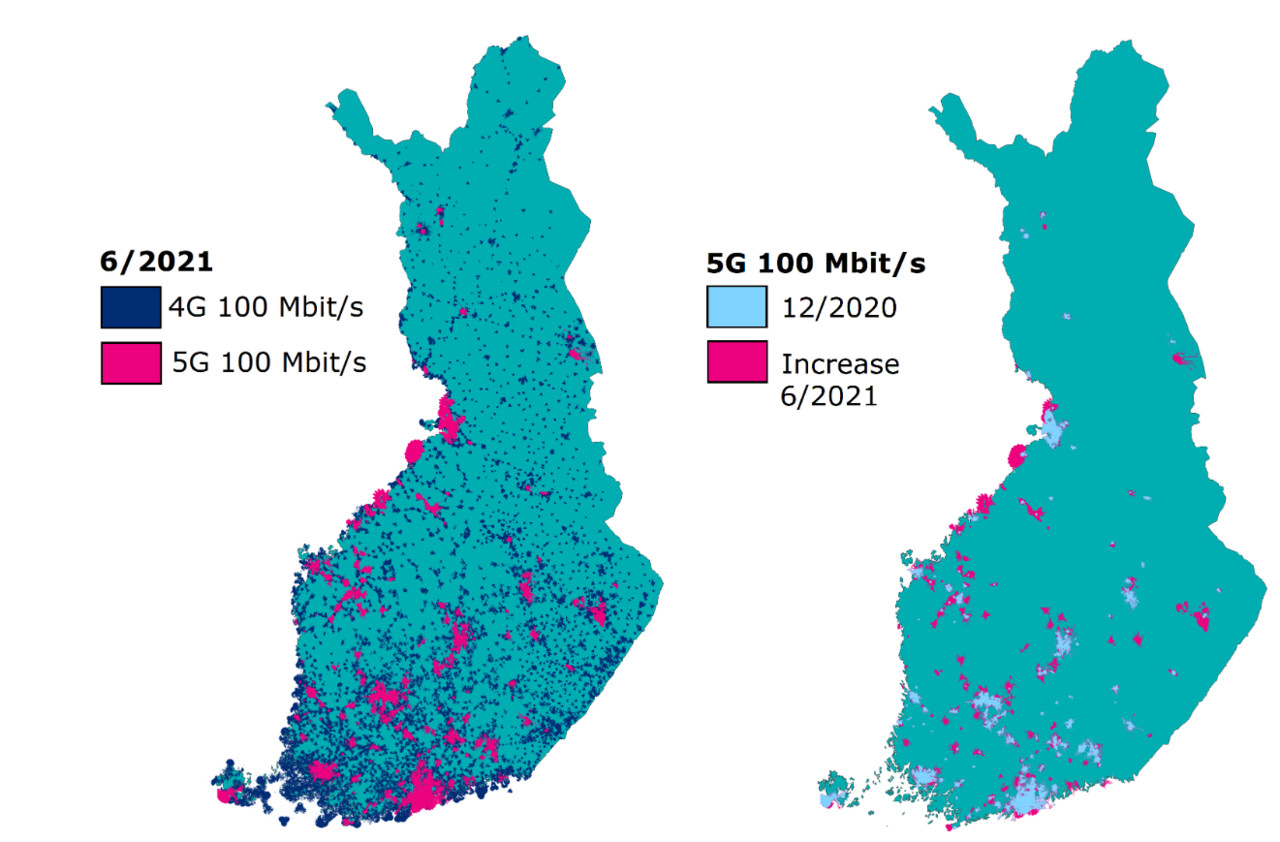Data usage by Finns is distributed fairly evenly between the mobile network and the fixed network. In the other countries that compile statistics on data transfer in the fixed network, the share of the fixed network is significantly larger. In fact, Finland has been a major consumer of mobile data transfers on an international scale, and the coverage of mobile networks in our country is comprehensive. The coverage of 100 Mbit/s 5G mobile networks has grown rapidly during the first part of the year. In late June, the network was already available for 76% of the households. The Finnish Transport and Communications Agency Traficom publishes statistics on communications networks and their usage; the statistics are used to monitor the development of the communications market.
According to the data collected by Traficom from telecommunications companies, the data usage of Finns is distributed fairly evenly between the mobile and the fixed network subscriptions. “During the first half of 2021, an estimated 47% of data usage took place via mobile subscriptions and 53% via fixed network subscriptions. The figures are based on an estimate, because measuring data transfers over the fixed network is not simple,” says Senior Specialist Elina Pallas. The subscription-specific data transfer amounts also include significant variation based on the users’ needs. In total, each Finn used more than 115 gigabytes of data per month during the first part of 2021.
In an international comparison, the data usage of Finns seems fairly mobile-focused. For instance, the share of the mobile network of data transfers in Denmark was approximately 12% in the latter half of 2020, while Germany and the United Kingdom remained at roughly 5%. In Finland, the data usage of mobile subscriptions is typically not limited, unlike in many other countries, and many Finnish homes only have a mobile connection available. The coverage of mobile networks in our country is also comprehensive.

The 5G mobile network is expanding quickly
The 5G network that can reach a minimum download speed of 100 Mbit/s in ideal conditions was available in as many as 76% of Finnish households by the end of June. The growth has been fairly rapid, because six months earlier the network covered 67% of households. The network now covers 5% of the land area. The situation of the 4G network has not changed significantly from earlier; the 4G network with a minimum speed of 100 Mbit/s covered 93% of households and 18% of the land area.

The 5G network has been built first in the most densely populated areas. 45% of the households are already covered by three and 62% by two operators’ 5G networks. Networks by several different operators are available especially in the largest population centres, because the 5G networks largely overlap each other. New municipalities are constantly being included within the 5G network coverage. There are already more than 160 municipalities with at least one 5G base station.
The construction of the fast 5G network is also expected to affect the amounts of data transferred. Consumer use will continue to grow in the future, too, both in fixed and mobile subscriptions. However, the most significant growth is expected to happen in business services and the digitalisation of infrastructure, such as machine-to-machine data transfers and the new digital traffic innovations and automation. New innovations also set new kinds of demands for network speeds, latency and coverage. “At Traficom, our job is to ensure that everyone has access to modern communication services that suit their needs at a reasonable price, and as a part of this task, we monitor both the networks available and their usage,” says Pallas.
The information is based on data collected from telecommunications companies and other sources by the Finnish Transport and Communications Agency Traficom.
Communication statistics compilation table (External link) (ods)
Coverage of mobile broadband services on 30 June 2021
Additional information
Elina Pallas, Senior Specialist, tel. +358 295 390 126, elina.pallas@traficom.fi
Joonas Sotaniemi, Communications Market Specialist, tel. +358 295 390 309, firstname.lastname@traficom.fi (mobile network availability)